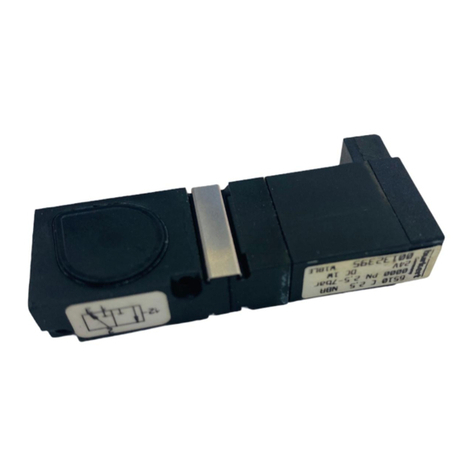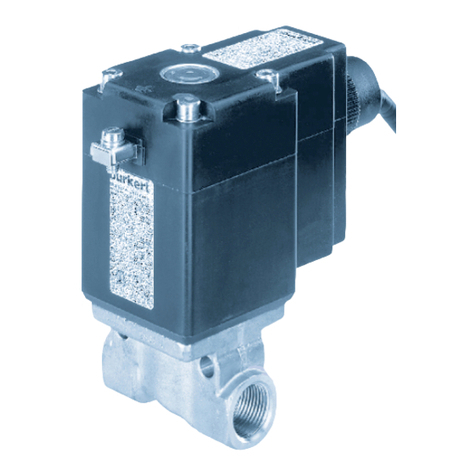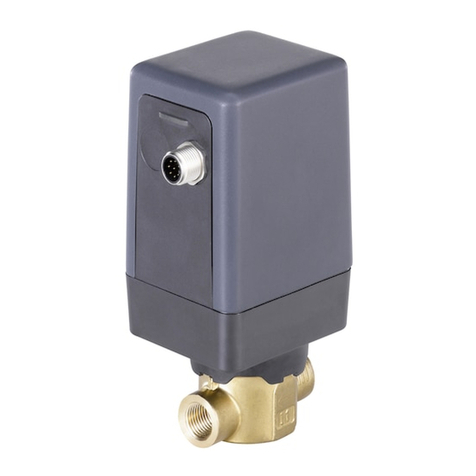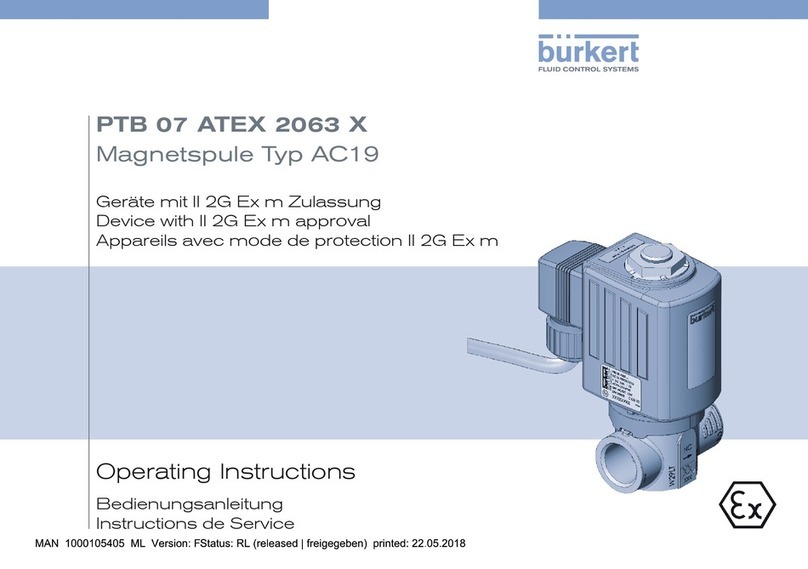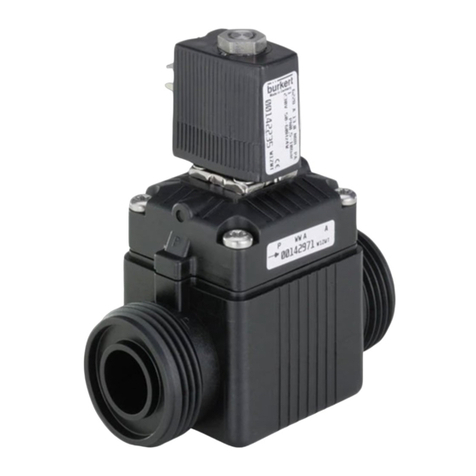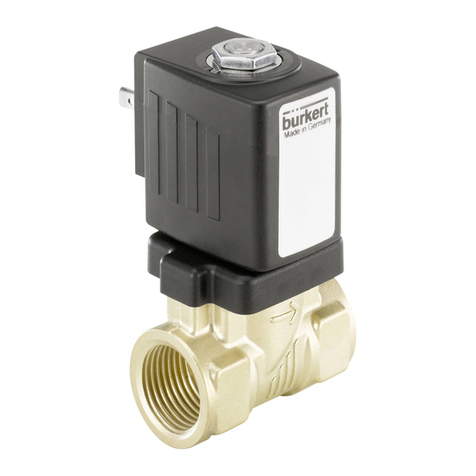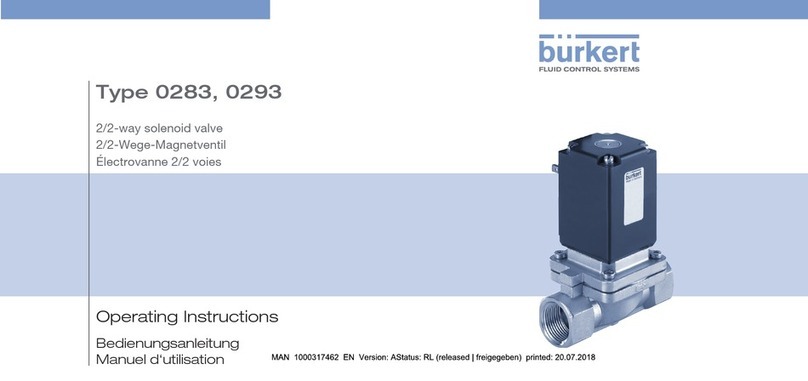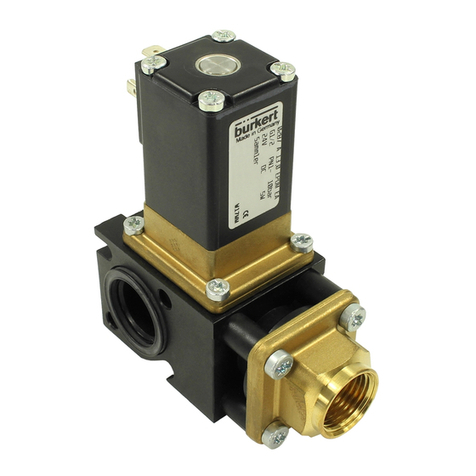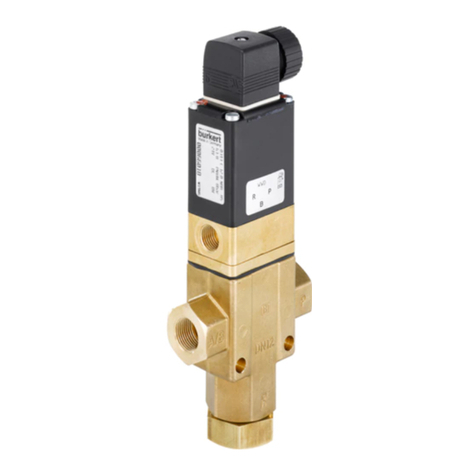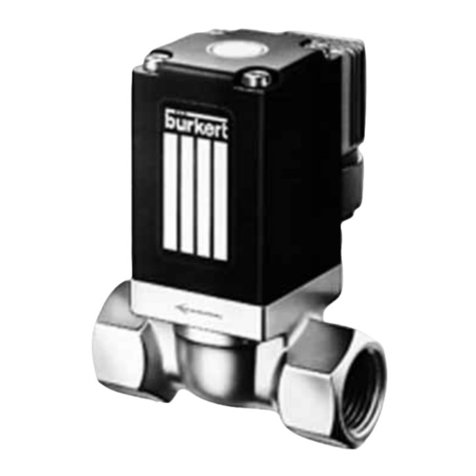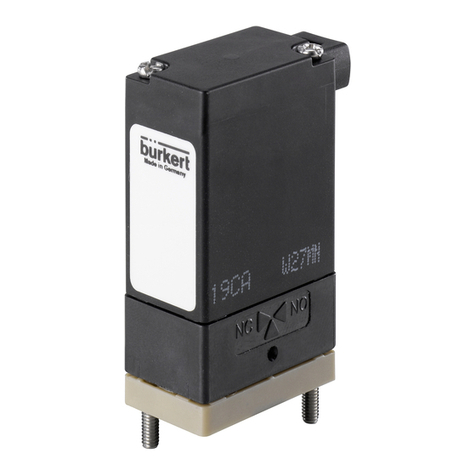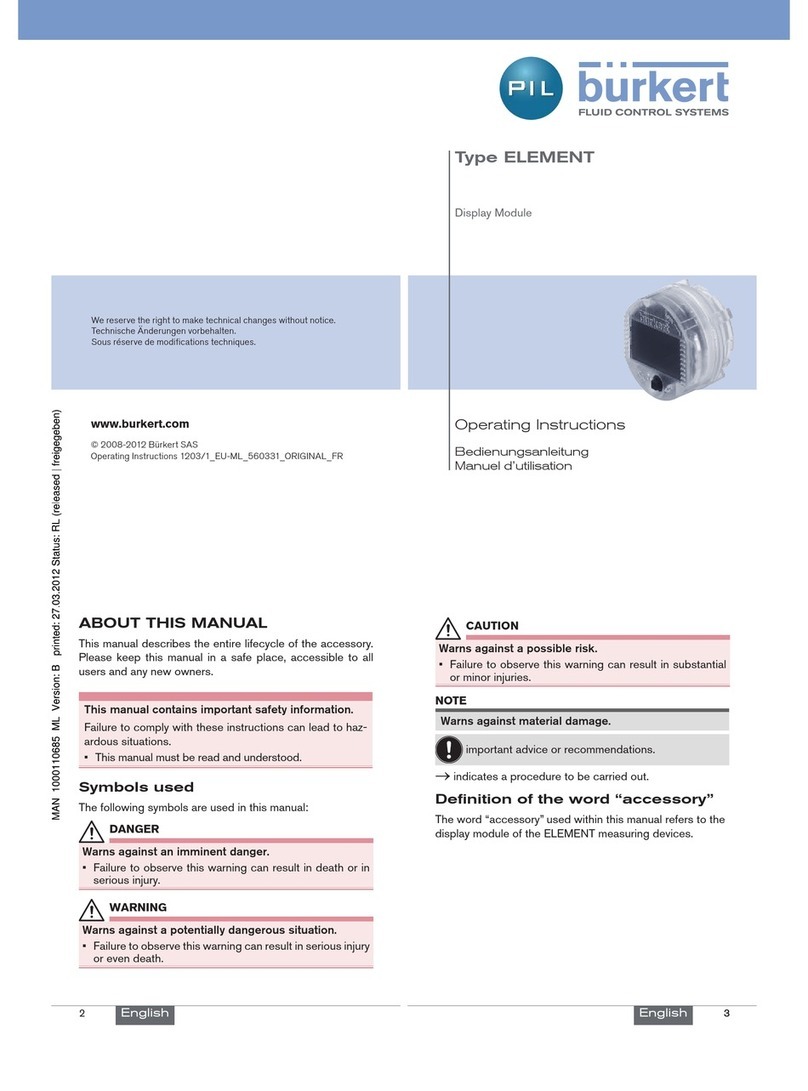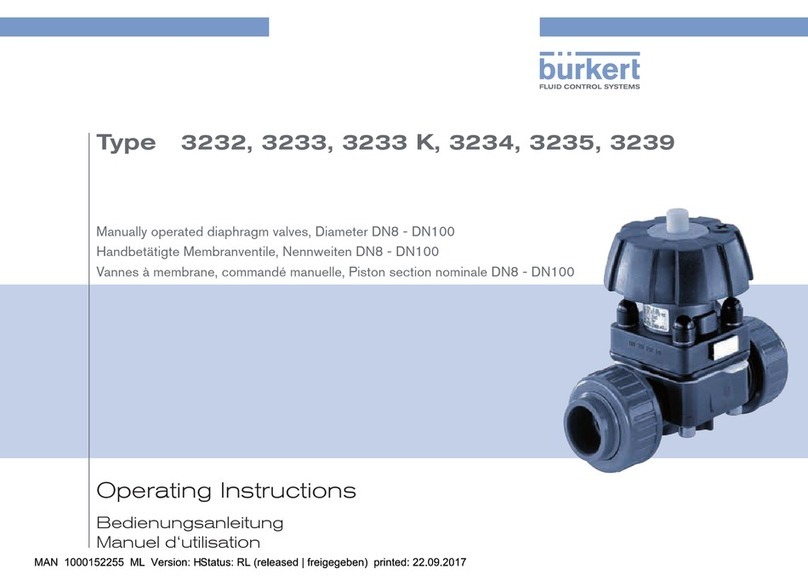
4
3 BASIC SAFETY INSTRUCTIONS
These safety instructions do not make allowance for any contin-
gencies and events which may arise during installation, operation
and maintenance.
The operator is responsible for observing the location-specic safety
regulations, also with reference to personnel.
Risk of injury due to high pressure in the system or device.
▶Before working on the system or device, switch o the pressure
and ventilate and empty the lines.
Risk of injury due to electric shock.
▶Before working on the device or system, switch o the power
supply and secure to prevent reactivation.
▶Observe the applicable accident prevention regulations and
safety regulations for electrical devices.
Risk of burns or re from hot device surfaces due to prolonged
operation.
▶Keep the device away from highly ammable substances and
media and do not touch with bare hands.
Risk of injury due to malfunctioning valves that operate with
alternating current (AC).
A seized core causes the solenoid to overheat, which leads to
functional failure.
▶Monitor the working process for proper function.
General hazardous situations.
Ensure the following the prevent injuries:
▶the device only when it is in perfect condition and in
accordance with the operating instructions.
▶Do not make any internal or external changes to the device and
do not subject it to mechanical stress.
▶Secure device or system to prevent unintentional activation.
▶Make sure only trained technicians carry out installation and
maintenance work.
▶Install the valves according to the regulations applicable in the
respective country.
▶After an interruption in the power supply, ensure that the process
is restarted in a controlled manner.
▶Observe the general rules of technology.
English


